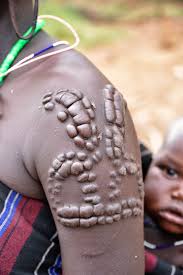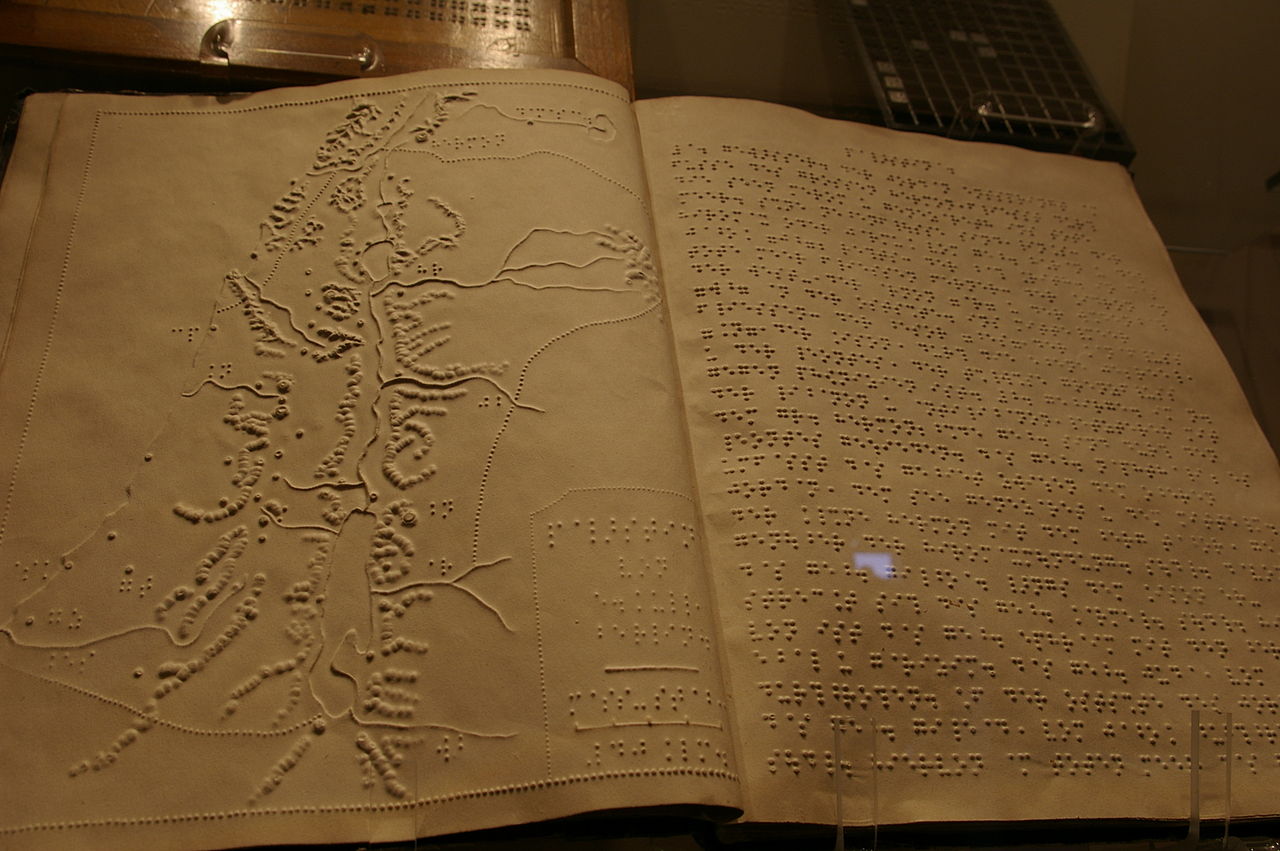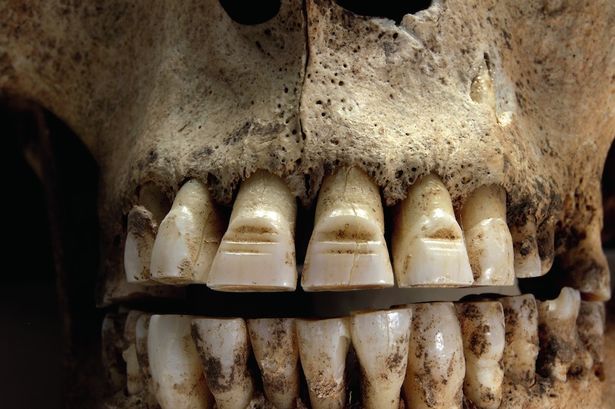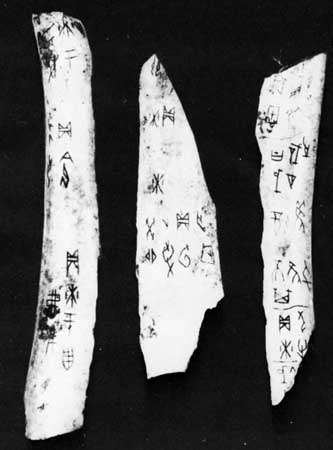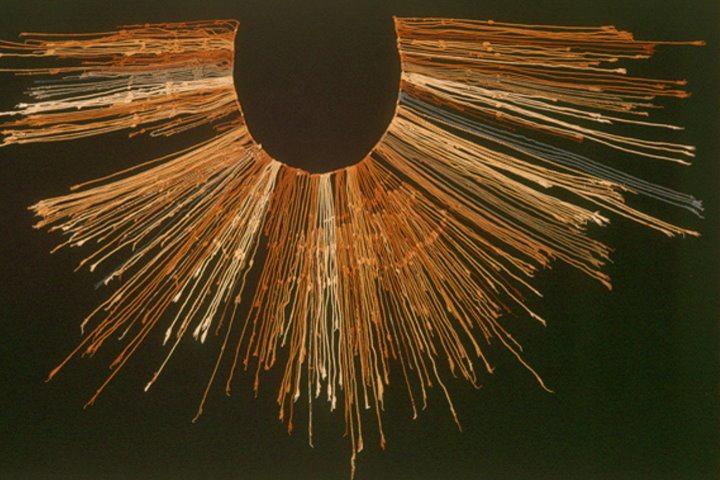Skin:
Textured skin decorations could easily be symbolic or pictographic as the Mursi tribe in Ethiopia attest, perhaps speaking of status, achievements, marital status or personal history or allegiances:
Flickr unattributed
Vellum.
Skins of the dead would be prepared by soaking in a mixture of urine and feces then scraping and washing. Before drying, an impression can be forced into the surface from behind to create a palpable bump, ridge or texture as desired:
Copyright Wikipedia under CCASAL 2021
Teeth:
These can be carved in-situ to provide identification of office or status with primitive tools:
British Museum via ZME science 2021
Bones:
Bones can be carved to a texture and have been for thousands of years, some of the earliest Chinese writings are to be found in the "Oracle-Bones" found in various hoards, translated hundreds of years later by scholars.
Cambridge University library, via Britannica 2021
Perhaps kept in great libraries, perhaps in personal collections, perhaps each skeleton tells the history of it's owner, the writer certainly has options.
Hair:
The Quipu Writings of the Incas are held on knotted string, though translation has been unsuccessful it is thought to have been one of the earliest forms of information retention system.
Unattributed commercial website savacations . com

